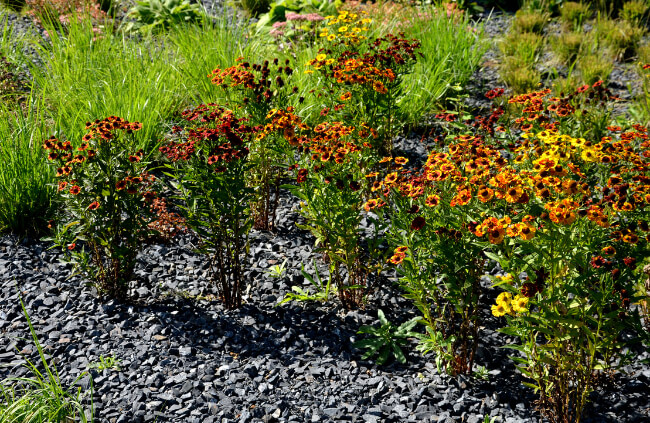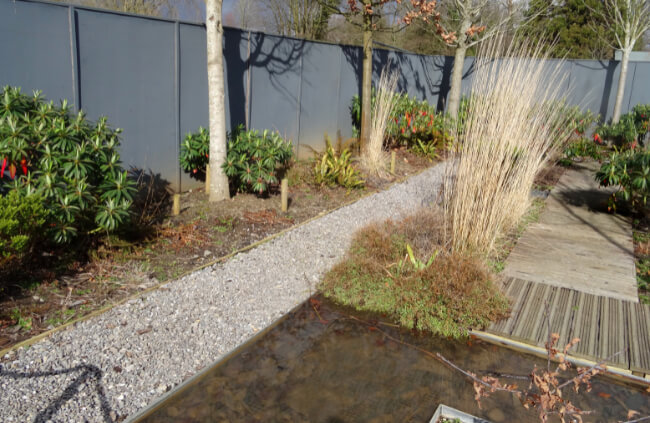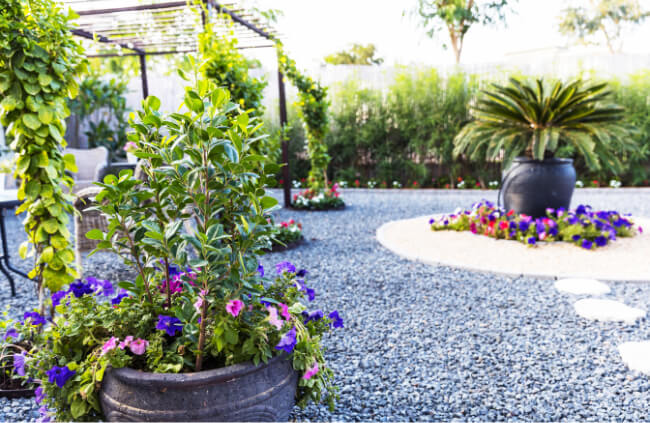How to Use Landscaping Gravel
Landscaping with gravel is not a new idea but it is a concept that many gardeners struggle to come to terms with. Especially if it means replacing the sacred lawn. Then the idea either enters the “Let’s consider it” basket or it’s relegated to the abyss of stupid gardening thoughts.
But, landscaping gravel doesn’t have to replace your lawn. There are many uses for gravel in your garden design than just surfacing large areas. Using gravel as mulch, laying as a pathway, or even creating a focal point with a pair of chairs and table positioned atop.
More...
Different Ways to Use Landscaping Gravel
The real charm of gravel is that it comes in many different forms yet they can all be retailed under the same name. Landscaping gravel can be sold as pea gravel, horticultural grit, decorative gravel, coarse-grade stone chippings, stone aggregate and even shingle. And as it ranges from different source materials so the colours available differ as well.
Depending on what application you have in mind and what has already been established within your garden setting so far, you are sure to find a landscaping gravel suitable. Rustic, earthy tones; dulcet hues of depressed greys to brighter, decorative gravels can transform your garden almost immediately.
Using Landscaping Gravel as Mulch

As a mulch, gravel can be quite ornate and fulfil a variety of functions. The best function of gravel mulch is its ability to allow moisture through to the plants that it surrounds. Many organic mulches that contain plant materials can often trap moisture and become impermeable. But gravel doesn’t suffer from this and it still reduces the rate of evaporation, as a mulch should.
However, landscaping gravel often fails to suppress weeds when used as a mulch due to its coarseness. So, to make it more effective, a semi-permeable weed-suppressing membrane such as perforated plastic or shade cloth needs to be laid underneath. This is even more important if you are using horticultural grit as its fine grains can eventually seep into your soil.
Another downside of using gravel as a mulch is that it can become quite hot in the summer months and really hurt some of your plants. So be mindful which plants you use gravel to mulch around.
Using landscaping Gravel for Pathways

And why wouldn’t you? Gravel is a great medium for constructing paths throughout your garden. It offers rigidity yet flexibility that you don’t get from paving or concrete and it’s more long lasting than sawdust or lawn paths.
Gravel even has a great sound to it when you walk or wheel items over it. The ‘crunch’ comes from the individual stones being able to move, accommodating your step pattern – much like walking along a pebbled beach.
If you use landscaping gravel for a pathway you need to consider how other areas of the garden join with this medium. If the pathway runs between garden beds then you should have no problems with it. But, if it borders a lawn you may need to consider edging the gravel so that it doesn’t become a projectile when you’re mowing.
Surfacing Large Areas with Gravel

Many non-gardeners find this an attractive landscaping feature because of its low-maintenance qualities. Even these days more gardeners are being attracted to it for their xeriscape or waterwise gardens. And as a surface medium it has plenty to offer.
At its most basic level landscaping gravels in large areas look fantastic. They’re immediate and take very little effort to install and maintain. They also have the ability to create a mood within your garden that can only come with using a stone cover such as gravel.
If you want to keep the weeds from growing through these then underlaying the gravel with a weed-suppressing membrane is still a helpful idea.
For gardeners who have little children, landscaping with gravel may not be the best choice as they provide very little protection for their hands and knees and can be quite awkward for young feet to walk across. So, maybe it’s time to reconsider using gravel in your landscape.
Published on June 5, 2023 by AGT
Last Updated on November 6, 2023




